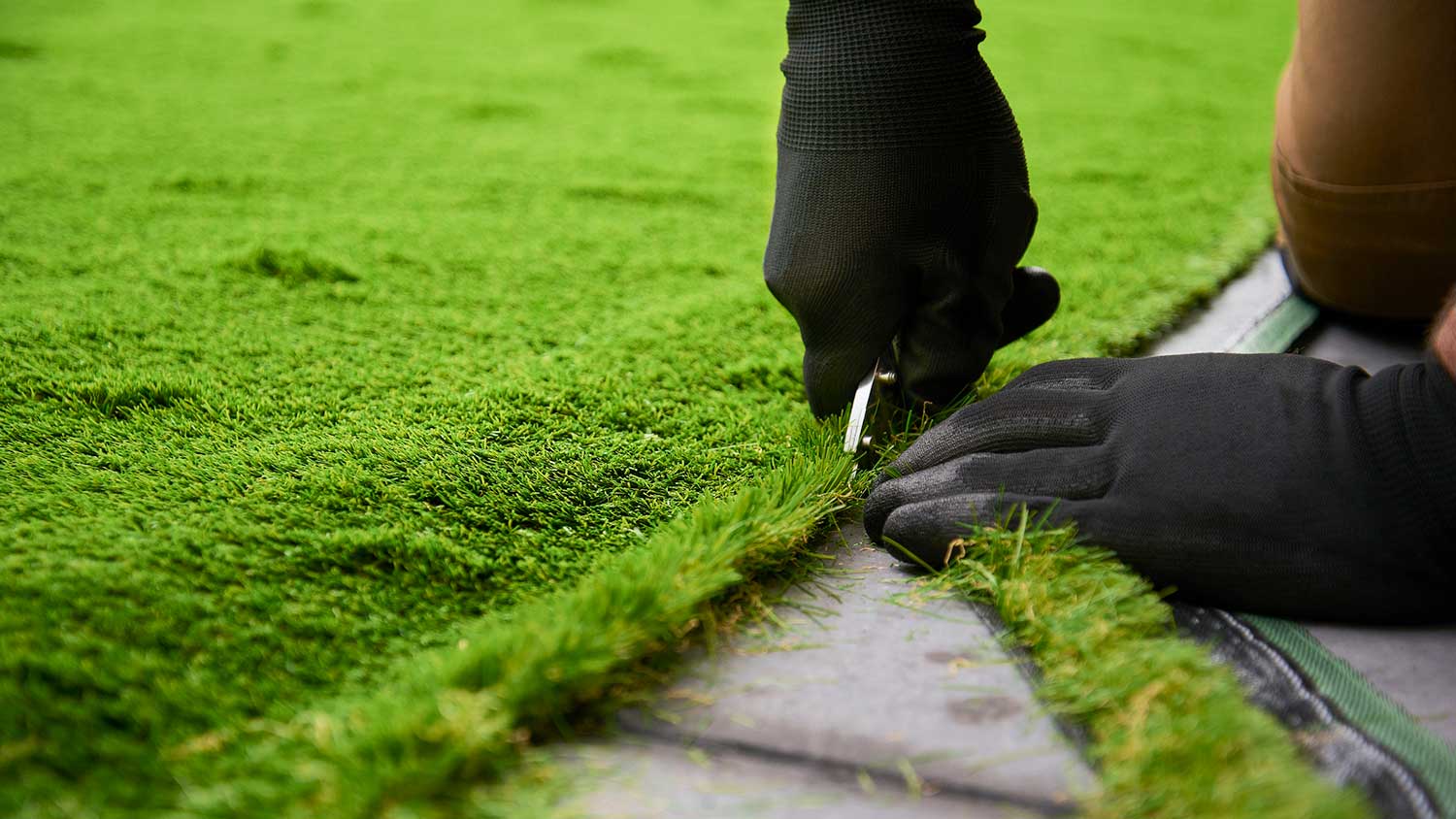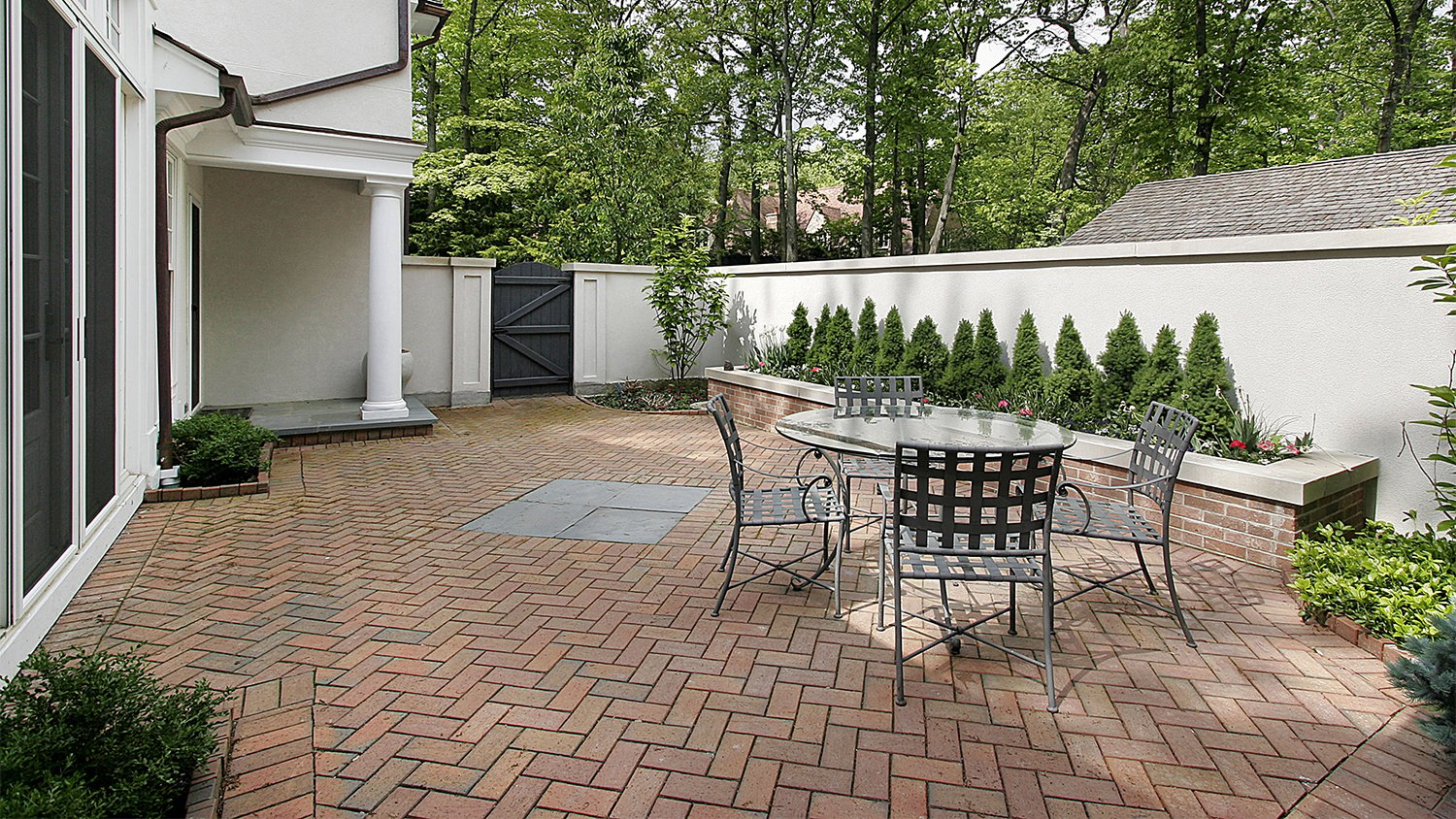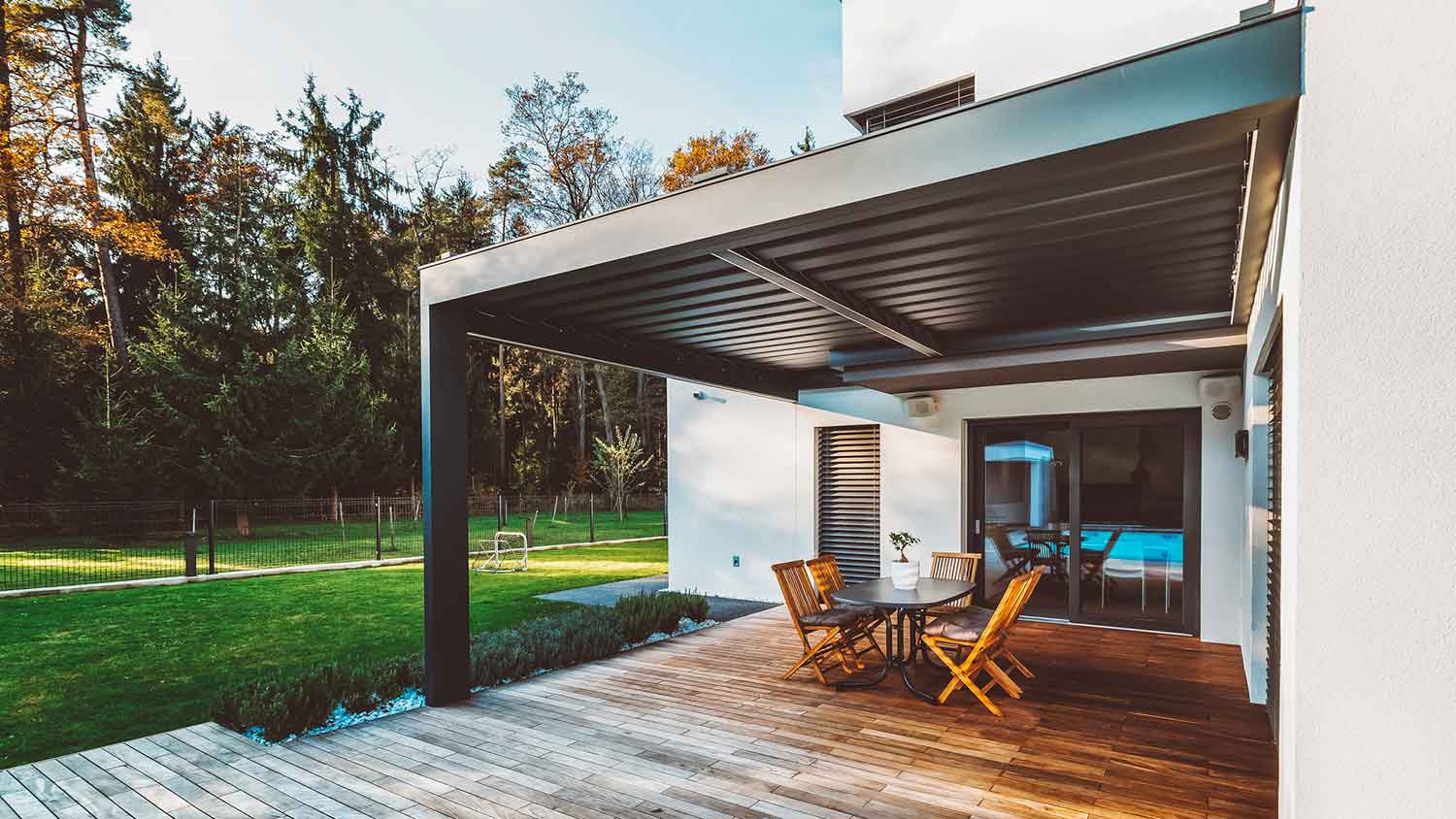
Learn the cost of a metal awning for your home. Discover the essentials of installation, materials, and labor, and explore ways to save on your project.
DIY your way to a grassy deck surface with these tips


While you may think of artificial grass as traditionally being a lawn cover, you can also use it on top of wood decking. When you install it properly, the grassy surface can offer an added layer of protection for small kids and prevent surfaces from becoming too slippery after the rain.
It can even cut back on how often you need to call in a local deck repair pro to stay on top of deck maintenance too. If you’re into the idea of adding artificial grass to your deck, you’ll want to read on to find out the best way to do it.

Yes, artificial grass can be put on decks and is a great way to increase your curb appeal. Families with children, pet owners, and older adults can benefit from having artificial grass on their decks. Aside from curb appeal, using artificial grass on decks eliminates the need to fix issues such as discoloration. And let’s not forget another major benefit—no watering necessary.
The very first thing you want to do is plot out where exactly you’ll be laying your artificial grass and then measure that area. It’s much easier to do this step if you’ve cleared any furniture and debris off your deck (plus it will make step two that much easier).
Using a tape measure, get the length and width of the area you’re going to cover. You should add 2 inches onto your measurements to account for wiggle room (and waste).
Next, you’ll need to clean the deck. This is where the decking cleaner comes in. Spray your deck down with a hose and then apply your cleaning solution. It’s easier to do this with a spray application, but you can DIY your way through the process with a bucket and a scrub brush. You’ll need to give the surface 48 hours to dry before laying your carpet down.

No matter what type of artificial grass you chose, give it at least an hour to lay flat and breathe. Unwrap it while you’re prepping the rest of your area and supplies and put it in a dry and clean spot where it won’t be underfoot.
Since you already cleaned off the area for measuring and then scrubbed it down, there shouldn’t be too much left to remove. However, if you’ve noticed any newly fallen leaves or debris, you’re going to want to sweep them off your deck before getting started.

You’ll need to make sure all of your supplies are within close proximity to your deck so that you don’t have to run around looking for things once you get started. This is especially important when working with the adhesive and sealer—you don’t want to have to go searching for something and risk having it dry out before you’re ready.
If you’ve decided to use a layer of padding or drainage material, you’ll want to cut these sections first. The trick here is to cut your pieces into as few strips as you can to avoid having too many seams. Because decks are normally smaller than lawns, you may be able to get away with only having to make a few cuts. Use your utility knife and straightedge for this part.
This is an optional step, so if you’re skipping padding, you can move directly to step seven.
After you have the pieces measured out, you should apply the turf adhesive. You’ll want to follow the directions on the product very closely, but normally you’ll apply a layer—beginning at the furthest point away from you as possible—and then hold your trowel at a 45-degree angle to smooth it out.
Place down your padding and then apply pressure evenly across the entire surface.

Like with the padding, you’ll want to cut your faux grass pieces into as few strips as you can to avoid having too many seams. Because decks are normally smaller areas than lawns, you may be able to get away with only having to make a few cuts. Use your utility knife and straightedge again.
If you’ve skipped the padding, you’ll apply your layer of adhesive directly to your decking. However, if you used a layer of padding, you’ll want to apply this layer on top of that.
Typically, you’ll apply a layer—beginning at the furthest point away from you as possible—and then hold your trowel at a 45-degree angle to smooth it out. But you'll want to follow the directions on the spray very closely.
Repeat steps four through eight until you’ve covered the surface of the deck. Make sure you’re butting each piece directly up against the one before it as you go.
Drag a line of turf seam sealer down the entire seam, covering each joint as you attach a new piece.

After all of your pieces have been laid out, butted together, and sealed, you should be able to tell if you have any excess artificial grass or padding hanging over the edge of where you want it to be. If this is the case, you can use your shears to trim those pieces off and then dispose of them.
Use the weighted lawn roller to press all of the artificial grass and padding down, creating a firm seal as you go.
You should give your adhesive and sealer four hours before putting any furniture on it. Once everything has dried, your space will be ready to enjoy. Congrats on a job well done!
If you have a free afternoon to spend outside, and you’re a fan of learning a new skill, installing your artificial turf yourself should be a manageable task.
You can expect to pay between $2 to $8 per square foot to purchase faux grass. If you opt to hire a local artificial grass installer, it’ll cost an additional $3 to $8 per square foot.
From average costs to expert advice, get all the answers you need to get your job done.

Learn the cost of a metal awning for your home. Discover the essentials of installation, materials, and labor, and explore ways to save on your project.

Looking to spruce up your outdoor entertaining area? Learn how much it costs to seal pavers and what factors to consider when estimating your total.

A porch can expand your living space and add curb appeal. Find out what to budget for the cost of a porch on your home with this guide.

The primary reason a patio turns green is an abundance of mold, mildew, moss, lichen, or algae. Luckily, there are some ways to avoid this common problem.

Installing a new wooden deck? Explore this guide to learn about the best wood for decks, including the benefits, costs, and life expectancy of each type.

Sunken pavers can cause trip hazards and drainage issues, but in many cases, you can fix them yourself. This guide walks you through how to fix sunken pavers using basic tools and materials.